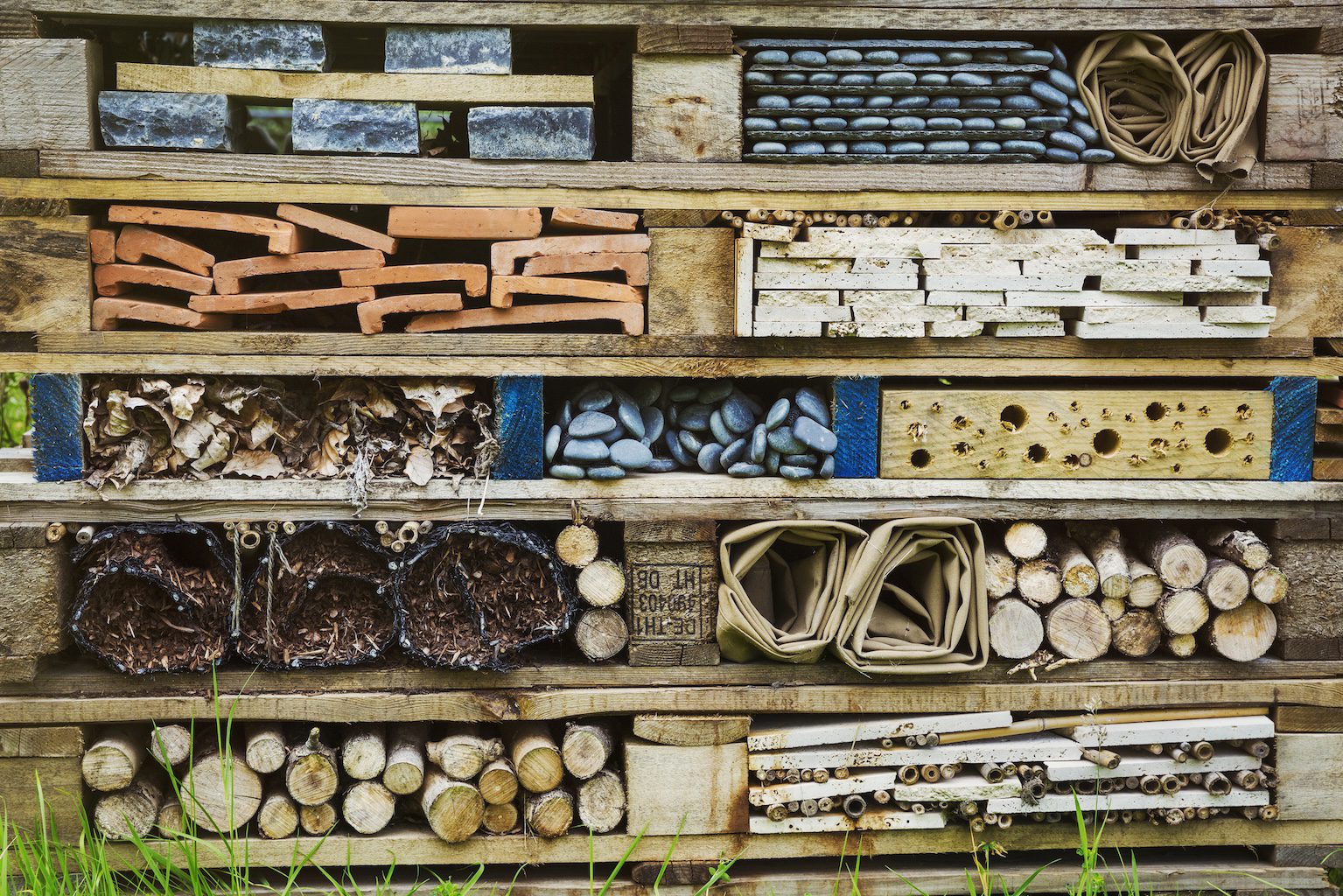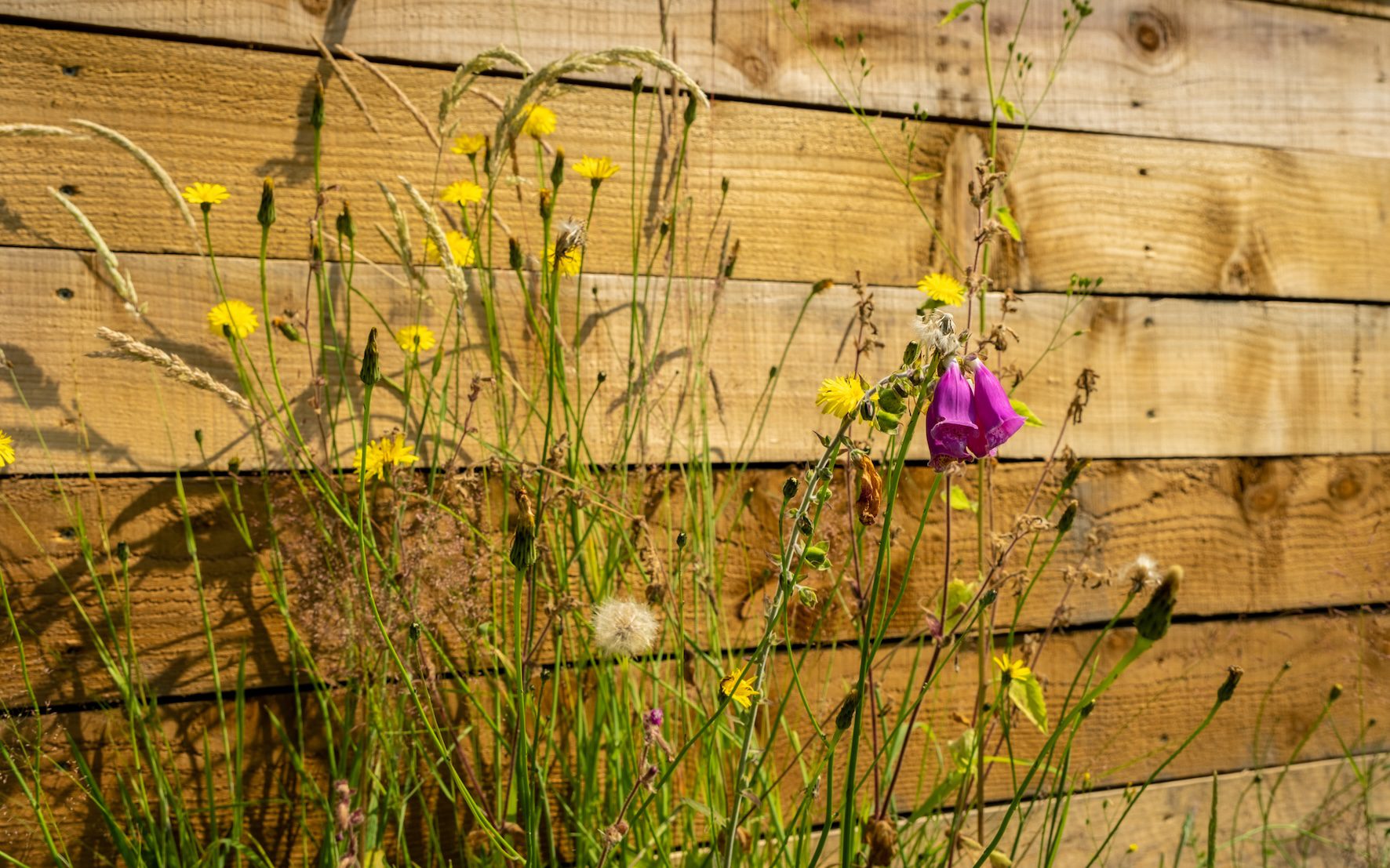It’s well-known how important – and rewarding – it is to make our gardens and other outdoor spaces welcoming for wildlife. But while the focus is often on birds and small mammals such as hedgehogs, insects need a helping hand too.
Pollinators such as bees and butterflies are vital for farming and food production, as well as helping shrubs and flowers thrive, but all insects have a role to play in a healthy environment.
Sadly, around the world 40% of insect species are at risk of extinction because of habitat loss, climate change, pesticide use and invasive species.
Our simple ideas will help you support a wide range of insects such as ladybirds and lacewings. By supporting a variety of wildlife you‘ll help improve soil quality, food productivity and declining species. And if you’re garden-proud then these tips will help your plants and flowers flourish too!

Support natural habitats
Allowing areas of your outdoor space to grow wild will provide the most natural environments for insects. Happily, this can be achieved by not doing much, so don’t be too quick to tidy up. Leave wood, rocks and fallen leaves for beetles and other insects to shelter under. If you want to create a wood pile to attract more creatures, put it in a damp, shady space for perfect conditions (but remember that it’s illegal to take wood from woodlands for your garden). There’s no need to fill every corner of your garden with greenery, either; bare soil can be used by bees and other species that nest in the ground.
Create handmade habitats
With just a handful of materials you can also build insect habitats, such as bug hotels. Fill the gaps in an old pallet or wooden box with bricks, pine cones, bamboo canes, twigs and dead leaves to provide a warm, dry home for a variety of insects. For a smaller space, lean two tiles or lengths of wood together on a dry surface, slotting pine cones underneath to make sturdy layers. For bees, drill different-sized holes in logs to make spaces for a variety of species. Over winter, store your shelters somewhere dry to prevent rot and fungus. Clean them with a soft brush and warm water in spring to remove any parasites.


Provide plenty of food
Tempt insects into your outdoor space with a floral buffet. Sow UK-native wildflower seeds in flower beds – or in pots if you have a balcony. This will attract not just pollinators but also hoverflies and ladybirds who’ll feed on plant-munching aphids. In turn, insects will attract other creatures such as frogs, birds and hedgehogs. If you can live with a more relaxed-looking garden, hold off cutting the grass and deadheading flowers as these places provide more food for wildlife. Letting flowers linger and disperse their seeds naturally means they’ll fill flowerbeds by themselves, saving you a job!
Leave your lawn
No Mow May is a simple idea – just don’t cut your lawn in May, to provide more food and habitat for insects. But there are ways to make your grass more beneficial for biodiversity all year round. Did you know that grass flowers provide food for early pollinators when few other plants are in flower, and that their seeds are a snack for sparrows? Find out more about the power of your lawn at the Plantlife site.

ALL IMAGES © GETTY
More ways to make a daily difference
Calculate your impact then track your progress as you reduce your environmental footprint with our My Footprint app.
More to explore

Reduce your pet’s carbon pawprint
Pets bring joy to our lives, but they also create a significant carbon footprint. Our tips will help you reduce the impact of your furry, scaly or fishy friends

